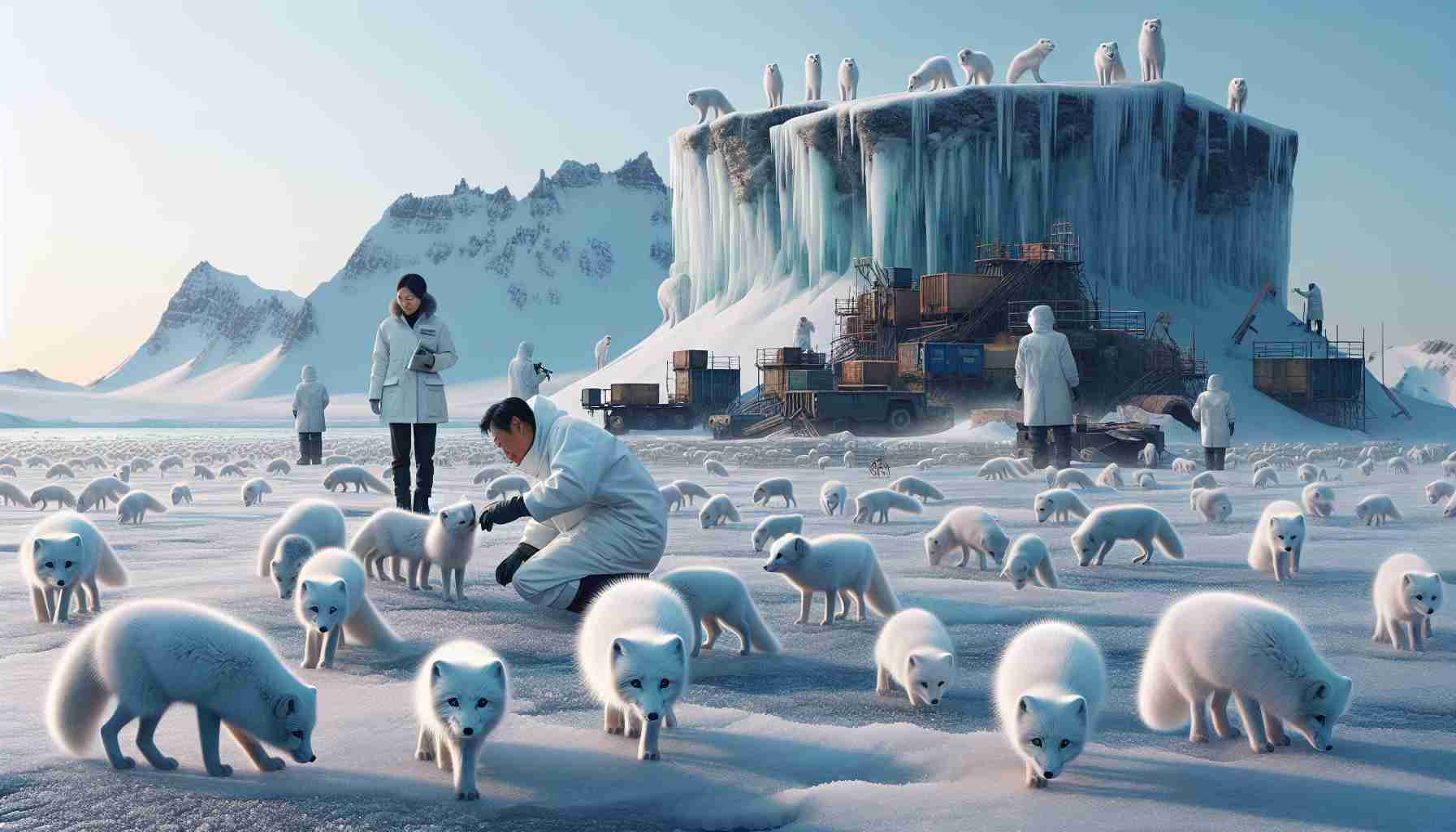In the heart of Scandinavia, a fight for survival is underway for the Arctic foxes. Once on the brink of extinction in Sweden, Norway, and Finland, conservation efforts are ramping up to ensure their revival.
As autumn breezes across the Norwegian tundra, Arctic fox cubs play in their dens while their future hangs in the balance. Biologist Craig Jackson and his colleague, Kristine Ulvund, are on a mission to nurture these creatures, often referred to as resilient survivors of the Arctic. At a breeding center in Norway, they provide high-quality food to the captive foxes, strengthening their chances of survival.
This breeding initiative, backed by the Norwegian government since 2005, has seen the release of more than 460 Arctic foxes into the wild. With their unique adaptations, Arctic foxes have navigated their harsh environment for centuries, but climate change and competition from red foxes threaten their existence.
To combat these challenges, supplementary feeding stations have been established across the region, ensuring these vital animals have access to food during lean years. However, this solution has sparked debates about dependency and proper wildlife management.
Despite these challenges, a silver lining emerges. With ongoing research and adaptive strategies, numbers are proving promising, as the wild Arctic fox population rebounded from only a few to about 550. Protecting this emblem of Arctic wilderness is essential, as their survival contributes to the ecosystem’s balance and cultural heritage of the area.
Conservation Warriors: The Fight for the Arctic Foxes in Scandinavia
The Struggle for Arctic Fox Survival
In Scandinavia, a significant conservation effort is underway to save the Arctic fox from the brink of extinction. Once nearly wiped out in Sweden, Norway, and Finland, these resilient creatures are experiencing a resurgence thanks to dedicated initiatives.
The Conservation Efforts
Biologists like Craig Jackson and Kristine Ulvund are leading the charge at a breeding center in Norway, which has been operational since 2005. Their team has successfully released over 460 Arctic foxes into their natural habitats. This concerted effort aims not only to bolster the population but also to fortify the wild animals’ chances of thriving in a rapidly changing environment.
Innovative Strategies
The conservation program incorporates several innovative strategies:
– High-Quality Nutrition: The breeding centers prioritize quality food to enhance the health of captive foxes before their reintroduction into the wild.
– Supplementary Feeding Stations: These stations provide essential nutrition during harsher seasons, safeguarding food availability without fostering over-dependence on human intervention.
Challenges Faced
Despite the promising efforts, the project faces several formidable challenges:
1. Climate Change: Alterations in weather patterns and habitat may threaten the delicate balance of Arctic ecosystems, impacting prey availability and the foxes’ hunting strategies.
2. Competition with Red Foxes: As red fox populations expand, they pose a direct threat to the Arctic fox through competition for resources and habitat.
3. Debates on Management: The use of feeding stations has spurred discussions about wildlife management and the potential for creating dependency on human support.
Current Status and Future Predictions
Recent surveys indicate a resurgence in the wild Arctic fox population, rising from a mere few to approximately 550 individuals. Protecting this unique species is not only crucial for ecological balance but also for maintaining the cultural heritage tied to the Arctic region.
Sustainability and Environmental Impact
The Arctic fox plays a vital role in its ecosystem, contributing to biodiversity and serving as a predator for rodents and other small mammals. Their survival ensures the health of the tundra habitat, which is increasingly under threat due to climate change and human encroachment.
Call to Action
Conservationists emphasize the importance of continued support for Arctic fox initiatives, encouraging public awareness and involvement. As these apex predators navigate a precarious future, their story underlines the broader themes of resilience in the face of environmental change.
For more information on wildlife conservation efforts and how you can help, visit World Wildlife Fund.
Final Thoughts
The journey of the Arctic fox is a testament to the power of conservation efforts and the ongoing fight against climate change. As scientists and biologists work tirelessly, the hope remains that these iconic creatures will continue to thrive in their Arctic home.
